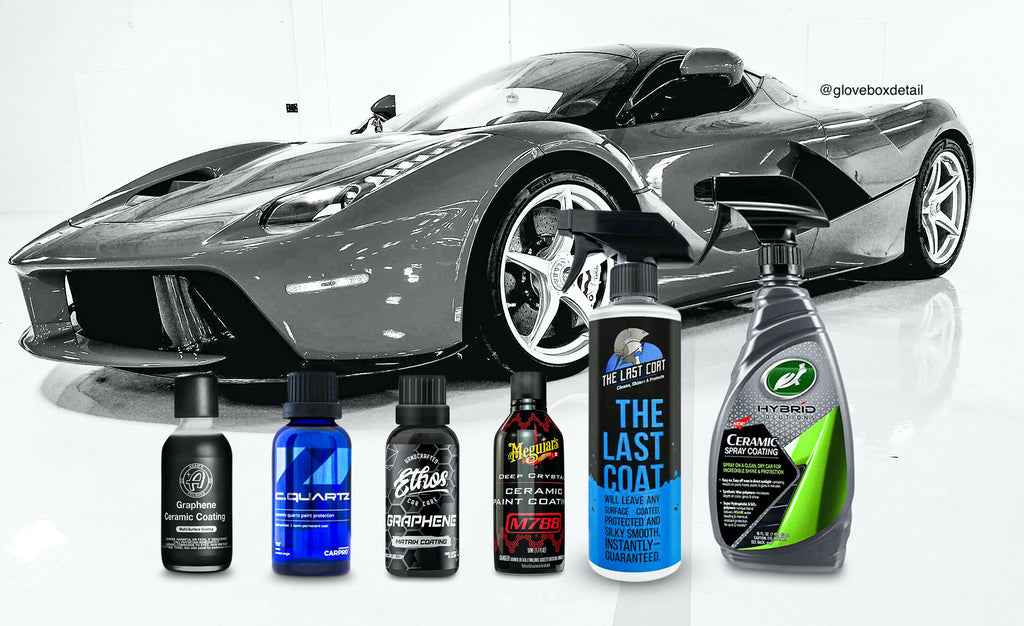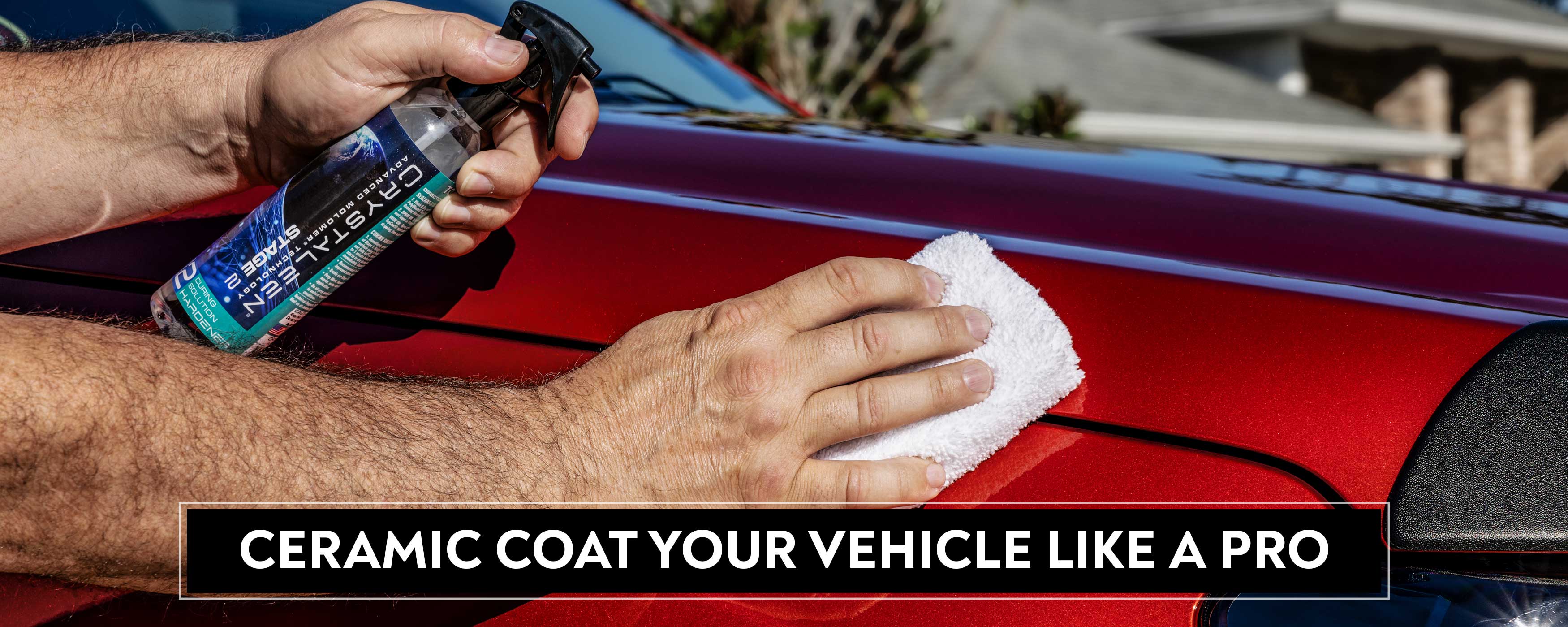Experience Ceramic Pro: Unmatched Security for Your Automobile's Paint
Wiki Article
The Science Behind Ceramic Finish: Just How It Boosts Your Vehicle's Aesthetic and Durability

Comprehending Ceramic Covering Chemistry
The chemical make-up of ceramic finishes plays an essential function in establishing their toughness and protective residential or commercial properties on car surfaces. Ceramic coverings are generally made up of silicon dioxide (SiO2), which is a primary component offering solidity and warmth resistance. Various other components such as titanium dioxide, silicon carbide, and polysilazanes are often contributed to boost specific properties like UV resistance, hydrophobicity, and bond.
Silicon dioxide, also called silica, forms a strong and clear layer on the automobile surface area when used properly. This layer works as a guard, safeguarding the paint from environmental impurities, UV rays, oxidation, and chemical spots. Titanium dioxide assists in blocking damaging UV rays that can create paint fading and wear and tear. Silicon carbide is known for its abrasion resistance, making the ceramic finish hard and resilient versus physical damage. Polysilazanes are utilized to improve the coating's versatility and bond to the automobile's surface area, ensuring long-lasting protection. Recognizing the chemistry behind ceramic coverings is important for both applicators and lorry owners to value the value and benefits these finishes offer in keeping the aesthetic appeal and durability of cars.
Improved Gloss and Mirror-like Finish
Comprehending the chemical composition of ceramic coatings not only reveals their safety residential properties but also sheds light on just how they add to achieving an enhanced gloss and mirror-like finish on automobile surfaces. The secret to the glossy effect depends on the nano-ceramic fragments existing in the finishing. These particles complete tiny pores and imperfections on the surface area, developing a smooth and level finish. As light hits the coated surface area, it reflects consistently, providing the appearance of a deep, glossy sparkle. In addition, the chemical structure of ceramic coverings allows them to develop a solid bond with the automobile's paintwork, preventing oxidation and preserving the clarity of the coating with time. This bond additionally withstands ecological pollutants, such as dirt and gunk, that can dull the sparkle of the vehicle. The mix of loading homes, light representation, and lasting defense makes ceramic finishes a popular selection for those looking for a vivid and mirror-like surface for their cars.
Influence On Paint Security and Long Life
Ceramic finishings for lorries dramatically boost the longevity and security of the paintwork. By forming a chemically resistant layer on top of the automobile's clear layer, ceramic finishings act as a barrier versus various environmental contaminants that can damage the paint with time. These finishings are created to drive away dirt, water, road salt, bird droppings, and various other harmful substances, decreasing the threat of paint oxidation and rust. Furthermore, the firmness of ceramic layers provides a degree of scrape resistance, aiding to maintain the automobile's look for a prolonged period.In regards to durability, ceramic finishings provide a resilient option contrasted to traditional waxes or sealers. While waxes might last a couple of weeks to a couple of months, ceramic layers can in 2014 visit this site right here with correct upkeep. This extensive lifespan not only lowers the frequency of reapplications but also conserves effort and time in the lengthy run. Overall, the safety properties of ceramic finishes contribute dramatically to maintaining the automobile's paintwork and improving its visual charm over an extensive period.
Resistance to Pollutants and Extreme Elements
With the safety guard offered by ceramic finishings versus different ecological contaminants and aspects, lorries are able to preserve their pristine appearance regardless of direct exposure to extreme problems. Ceramic coatings produce a strong barrier that fends off water, dirt, dirt, and other typical contaminants, preventing them from bonding to the car's surface area.In addition, ceramic layers provide UV protection, securing the car's paint from the sunlight's hazardous rays that can trigger fading and oxidation. This resistance to UV damage aids keep the shade intensity and shine of the paint for longer periods. By forming a long-lasting and long lasting barrier, ceramic coverings guarantee that the automobile's exterior continues to be safeguarded against a large range of contaminants and extreme elements, protecting its aesthetic charm and resilience.
Application Techniques and Maintenance Tips
For optimum results when using ceramic coverings to lorries, utilizing appropriate strategies and sticking to recommended maintenance practices are necessary. Before using the ceramic coating, it is crucial to extensively clean and sanitize the vehicle's surface area to make sure correct adhesion.When using the ceramic finishing, it is suggested to function in tiny sections to make sure also coverage and to avoid the item from drying out also promptly. Utilizing applicator pads or microfiber towels, use the layer in a crisscross or up-and-down activity, depending upon the product's directions. After the coating is used, enable Visit Website it to treat for the specified time prior to rubbing off any type of deposit.
In terms of maintenance, routine washing with pH-neutral soaps and staying clear of extreme chemicals or abrasive devices will certainly help protect the ceramic covering's stability. Periodic evaluations for any type of damage or endure the finishing can also assist keep its protective homes over time.

Verdict
To conclude, ceramic covering enhances an automobile's aesthetic charm and longevity through its chemical structure, supplying a glossy surface and securing the paint from ecological contaminants. Its resistance to severe components and ease of maintenance make it a popular selection for automobile proprietors seeking to preserve the look of their lorries. Overall, ceramic coating is a scientifically backed option for preserving the appearance and durability of your car.Comprehending the chemistry behind ceramic coverings is essential for both applicators and automobile owners to appreciate the value and advantages these finishings offer in maintaining the aesthetic charm and longevity of vehicles. (ceramic pro)
Understanding the chemical structure of ceramic layers not just exposes their protective properties however additionally sheds light on just how they contribute to attaining an improved gloss and mirror-like finish on car surface areas. By creating a chemically immune layer on top of the vehicle's clear layer, ceramic finishes act as an obstacle versus various environmental impurities that can damage the paint over time. Generally, the protective homes of ceramic finishes contribute considerably to protecting the lorry's paintwork and boosting its visual charm over a prolonged period.
In final thought, ceramic finish boosts an automobile's aesthetic charm and resilience Recommended Site with its chemical make-up, offering a glossy coating and securing the paint from ecological contaminants.
Report this wiki page